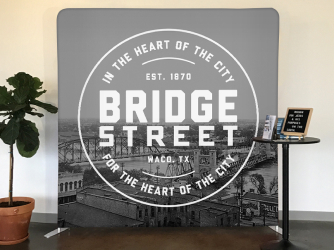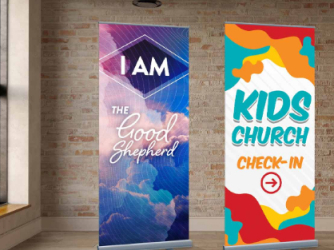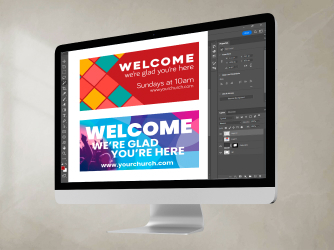The Clarity Strategy
30th Jul 2020

There’s a lot to be said for clarity, and how clarity is essential to communicate everything throughout your church’s experience.
Right now, the biggest topic of clarity is how you’re handling social distancing and interaction with your members and visitors as they come to your church.
Clarity in this situation will be communicated through:
- What information you are communicating from your website on what to expect.
- How you use Social Media (and other forms of marketing) to invite your community to your building.
- Your signage around your parking lot and building.
- How your ushers, greeters, and first impressions teams are interacting with your guests and each other.
- What is said from the stage about interactions.
Getting clear with your church’s stance on these measures means that there won’t be one angle from your first impressions team while something else is communicated through signage – for instance: Signage might say ‘Please wear your mask to church today’ and then your volunteers aren’t wearing masks at all times.
Your signage might say “please sanitize those praise hands” and then the hand sanitizer stations may not be filled. Making sure the new priorities and communicated out to your team is going to be critical in who needs to be overseeing these new responsibilities.
Each of these examples not only would tell a guest that you’re church isn’t clear about how it wants to handle the situation, but might even make guests choose to leave if they feel unsafe in your situation.
Step 1: Get clear and write it down.
What is your church’s stance? What is required by law? How will you meet those requirements? Is there anyone who must be exempt for some reason? How will you speak with someone who isn’t comfortable, or doesn’t want to meet your requirements when they come on Sunday?
Getting clear with your stance will allow everyone on your team to know what’s expected of them, and the guidelines with which to make a decision when necessary.
Step 2: Communicate that clarity internally with staff, leaders, and volunteers.
Give your first impressions team, worship team, kids teams, helps team, pastoral care team (and everyone else) your guidelines ahead of the weekend so they know exactly what to expect and can ask any clarifying questions they see necessary. THEN on Sunday in your team meetings, review those guidelines for anyone who may have missed them.
After Sunday, send out a feedback request to find out if anyone had any questions come up about the guidelines or what may need to be clarified or adjusted.
Step 3: Over Communicate Your Policy.
Between the time someone pulls into your parking lot and gets to your front door, they need to be clear what to expect from your church, and what your church is expecting from them.
If you’re requiring masks, have a sign letting them know as they’re parking so they don’t have to return to their car when they get to the front door.
If you’re not having kids classes, have signage about that so parents can give their kids a heads up before they get to the building and are disappointed.
If you’re using a specific door for entering, and a specific door for exiting, having signage for that.
If you’re blocking off alternative rows, use that signage opportunity to show off the personality of your church – something like “Another row would be happy to serve you” or “Sorry, I’m taking a break this week” Or “To maintain social distancing, and the safety of those worshipping together today, please choose another row.”
For the most part, people visiting your church want to be there, to worship in person, and to honor the decisions you’re making as a church. Be sure that it’s clear to them what is expected so they can work with you to create a positive experience for everyone else.
To see some examples on setting peoples expectations of what to expect when they arrive, take a look at some of our church signage. Each one is completely customizable and can be branded with your church message and colors as needed.





























